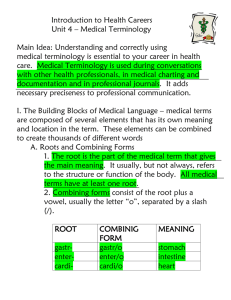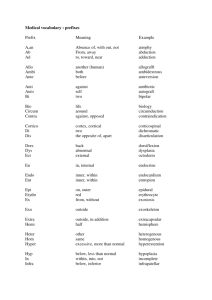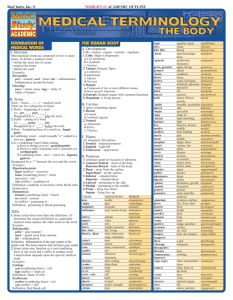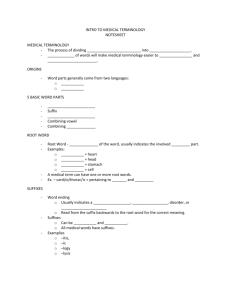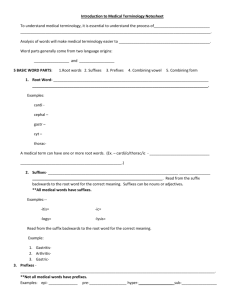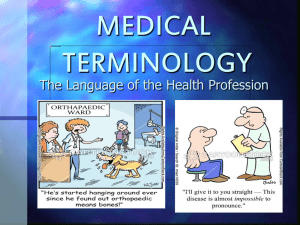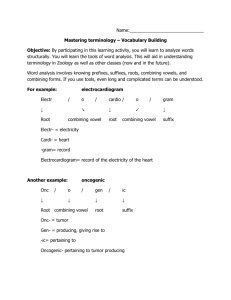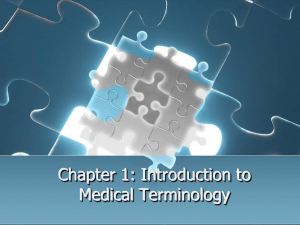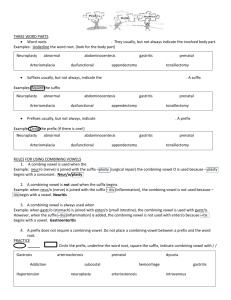Breaking Down Word Parts
advertisement
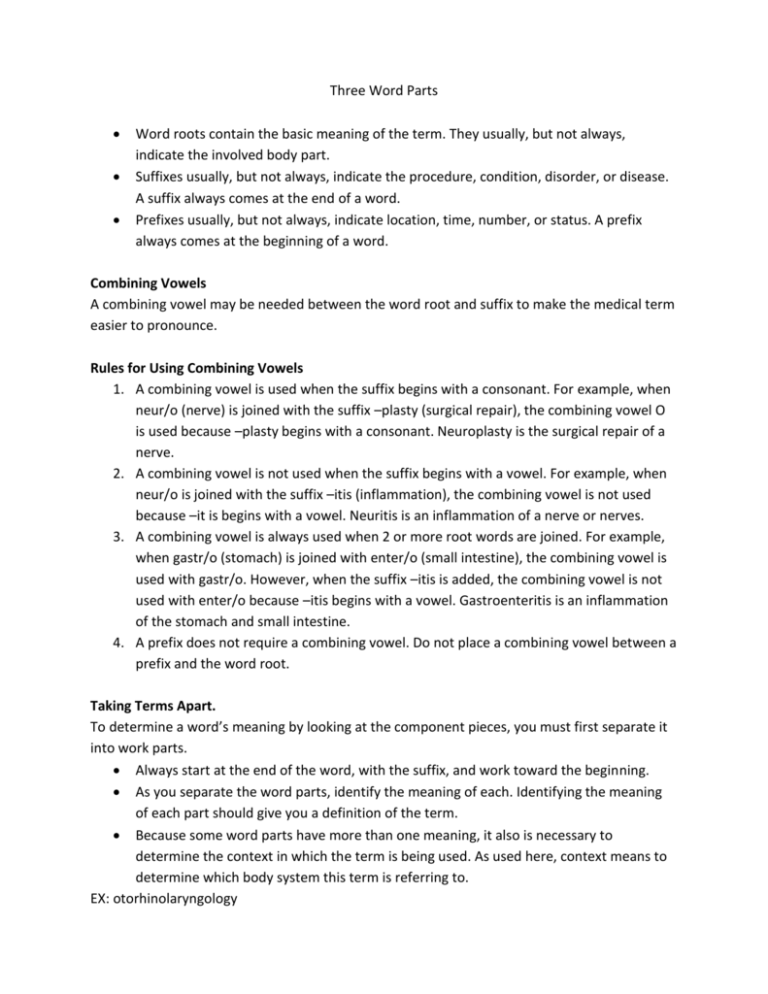
Three Word Parts Word roots contain the basic meaning of the term. They usually, but not always, indicate the involved body part. Suffixes usually, but not always, indicate the procedure, condition, disorder, or disease. A suffix always comes at the end of a word. Prefixes usually, but not always, indicate location, time, number, or status. A prefix always comes at the beginning of a word. Combining Vowels A combining vowel may be needed between the word root and suffix to make the medical term easier to pronounce. Rules for Using Combining Vowels 1. A combining vowel is used when the suffix begins with a consonant. For example, when neur/o (nerve) is joined with the suffix –plasty (surgical repair), the combining vowel O is used because –plasty begins with a consonant. Neuroplasty is the surgical repair of a nerve. 2. A combining vowel is not used when the suffix begins with a vowel. For example, when neur/o is joined with the suffix –itis (inflammation), the combining vowel is not used because –it is begins with a vowel. Neuritis is an inflammation of a nerve or nerves. 3. A combining vowel is always used when 2 or more root words are joined. For example, when gastr/o (stomach) is joined with enter/o (small intestine), the combining vowel is used with gastr/o. However, when the suffix –itis is added, the combining vowel is not used with enter/o because –itis begins with a vowel. Gastroenteritis is an inflammation of the stomach and small intestine. 4. A prefix does not require a combining vowel. Do not place a combining vowel between a prefix and the word root. Taking Terms Apart. To determine a word’s meaning by looking at the component pieces, you must first separate it into work parts. Always start at the end of the word, with the suffix, and work toward the beginning. As you separate the word parts, identify the meaning of each. Identifying the meaning of each part should give you a definition of the term. Because some word parts have more than one meaning, it also is necessary to determine the context in which the term is being used. As used here, context means to determine which body system this term is referring to. EX: otorhinolaryngology
